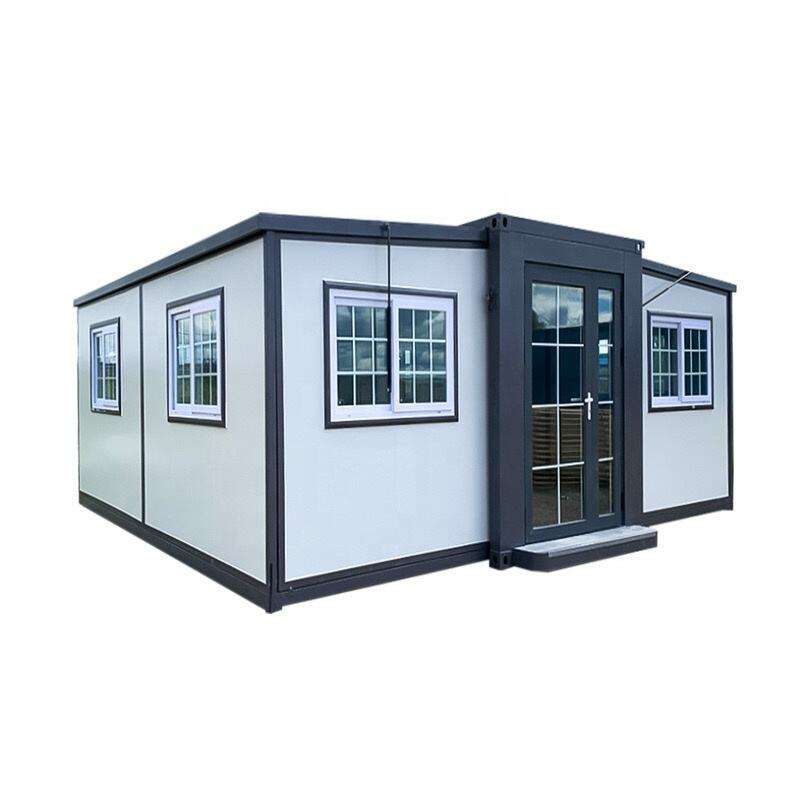Initial Investment Comparison
When considering investing in container homes, a vital decision is choosing between 20ft and 40ft models. The initial investment varies significantly; a used 20ft container typically costs less than a larger 40ft one, with prices starting around $2,000 for the smaller size and $3,000 for the larger. Conversion costs vary depending on customization and amenities but are generally higher for the larger container due to increased material needs and labor. Additionally, expenses like permits and land preparation can add to the overall cost. Financing options are often available, making these portable tiny homes more accessible. Various grants are also possible for eco-friendly housing projects, further reducing the financial barrier. According to a housing study, the initial cost for constructing container homes ranges from $10,000 to $35,000, with potential savings compared to traditional housing. These financial considerations make container homes an attractive option for cost-effective living, particularly in the realm of mobile home ownership.
Long-Term Savings on Maintenance
Container homes offer significant savings on maintenance over the long term, attributed to the durable materials used, such as Corten steel. This material provides exceptional resistance against weather and pests, reducing the need for repairs often associated with traditional homes. According to expert opinions, the efficient design of container homes means lower energy costs, as insulation modifications like spray foam yield better thermal regulation. This efficiency translates into lower utility bills and less frequent repairs. A case study highlighted modular home owners who reported a 30% decrease in maintenance costs over a decade, illustrating the sustainable savings these homes offer. Additionally, the pest-resistant nature of container homes lessens the likelihood of infestations, minimizing pest control expenses. With minimal upkeep required, homeowners can enjoy the benefits of reduced expenditures for years, making container homes not only a contemporary lifestyle choice but also a smart financial investment in mobile home living.
Corten Steel Construction Advantages
The backbone of modular container homes is often Corten steel, renowned for its corrosion resistance and strength. This material is especially advantageous as it weathers to form a protective rust layer, thus ensuring longevity even under harsh conditions. Industry reports suggest that structures made with Corten steel can endure significantly longer than traditional building materials, making them a wise investment for durable housing solutions. Additionally, Corten steel is recyclable, promoting sustainable practices in the construction of mobile homes or tiny homes.
Weather Resistance Across Climates
Modular container homes excel in diverse climates, demonstrating resilience from sweltering heat to freezing temperatures. This performance is attributed to studies on their thermal efficiency, which highlight their ability to maintain comfortable interiors regardless of external conditions. Enhancements such as superior insulation and innovative roofing materials can further amplify their weather-proof abilities, ensuring longevity and comfort. Numerous homeowners from various regions attest to the effectiveness of container homes in enduring climatic extremes, often citing them as a reliable option for prefab housing across the globe.
Recycling Shipping Containers
Recycling shipping containers into homes plays a pivotal role in sustainable living by effectively repurposing materials and reducing waste. Traditional construction methods leave a significant carbon footprint, but using old shipping containers minimizes environmental impact. Shipping containers are ubiquitous, and can be found at countless port cities worldwide. Reports suggest that there are millions of shipping containers globally, with vast numbers lying unused, providing a robust foundation for eco-friendly housing options. By converting these containers into homes, we are not only utilizing upcycled materials but also addressing urban housing shortages. As sustainability experts advocate, container housing is an ingenious solution that meets the demand for environmental responsibility and affordable living spaces.
Energy-Efficient Design Options
Incorporating energy-efficient designs into container homes makes them not only eco-friendly but also cost-effective. By integrating technologies like solar panels, rainwater harvesting systems, and comprehensive insulation, homeowners can significantly reduce utility expenses. There are numerous examples of container homes that have embraced these features successfully. For instance, a container home equipped with solar panels and thermal insulation in a sunny region can become largely self-sufficient. Experts recommend combining these energy-efficient practices with smart home technology for optimal results. These approaches not only reduce energy consumption but also enhance the comfort and sustainability of container homes, ensuring they are a viable option for green living.
Custom Layouts for 20ft Compact Spaces
One of the captivating features of 20ft container homes is the abundance of customization options they provide, allowing these compact spaces to be transformed into highly functional homes. From interior layout changes to multi-functional furniture and clever storage solutions, the possibilities are practically endless. For instance, one design project maximized space by incorporating loft beds, wall-mounted tables, and convertible sofas, demonstrating how a small space can feel much larger. Personalizing the design is crucial for tiny home dwellers, as it significantly enhances their living experience. Each layout can be tailored to fit the unique lifestyle and preferences of the owner, whether they prioritize open space for socializing or a more compartmentalized structure for privacy.
Multi-Level Configurations with 40ft Units
Leveraging the larger dimensions of 40ft container homes, multi-level configurations represent an ingenious solution for optimizing living space and creating unique environments. By stacking containers or incorporating mezzanine levels, these homes can provide significantly more space without the need for a larger footprint. Illustrations of modern architectural trends reveal innovative designs where bedrooms are placed on the upper level, while living areas maintain a cozy atmosphere below. Such designs not only maximize vertical space but also lend a distinct appeal to potential homeowners who favor a separation between living zones and private quarters. This approach aligns with the growing trend of promoting vertical living spaces in container home construction, showcasing the adaptability and versatility of these homes.
Prefab House Integration for Quick Assembly
Container homes are increasingly intertwined with prefab technologies, offering remarkable ease of assembly and reduced construction times. Integrating modular components into container homes has proven to cut both labor costs and build time substantially. For instance, prefab houses allow for parts to be manufactured off-site and then quickly assembled on location. Companies renowned for their pioneering methods in prefab container home projects have highlighted the immense value of these rapid assembly capabilities, pointing to completed homes in as little as a few weeks. Quick assembly also minimizes on-site disturbances and environmental impacts, making it an attractive choice for eco-conscious homeowners. Despite these benefits, integration issues such as ensuring proper insulation and structural integrity require careful consideration during the design phase.
Easy Relocation of 20ft Units
One of the most significant advantages of 20ft container homes is their lightweight nature and ease of transportation. These compact mobile homes can be conveniently moved from one location to another, giving homeowners the flexibility to explore different environments without losing the comfort of home. According to expert testimonials, families and individuals with mobile lifestyles have greatly benefited from this portability, enabling them to relocate as their circumstances or preferences change. However, while moving container homes can be straightforward, it's crucial to comply with local regulations and guidelines to avoid legal issues. Homeowners should be aware of rules, such as obtaining necessary permits and ensuring that their home adheres to regional zoning laws during transit and setup.
Maximizing Functionality in 40ft Designs
40ft container homes offer the possibility of enhanced functionality through innovative design choices. By utilizing multi-purpose spaces and open-plan strategies, these larger containers become ideal for families or individuals requiring more extensive living areas while retaining the potential for mobility. Features such as movable partitions, foldable furniture, and integrated storage maximize space use, making these container homes more appealing. Additionally, design competitions and awards often highlight the creative potential in utilizing space within 40ft designs, inspiring new homeowners with novel ideas. The trend of leveraging these larger containers showcases the potential for creating spacious yet efficient living environments that cater to diverse lifestyle needs.

